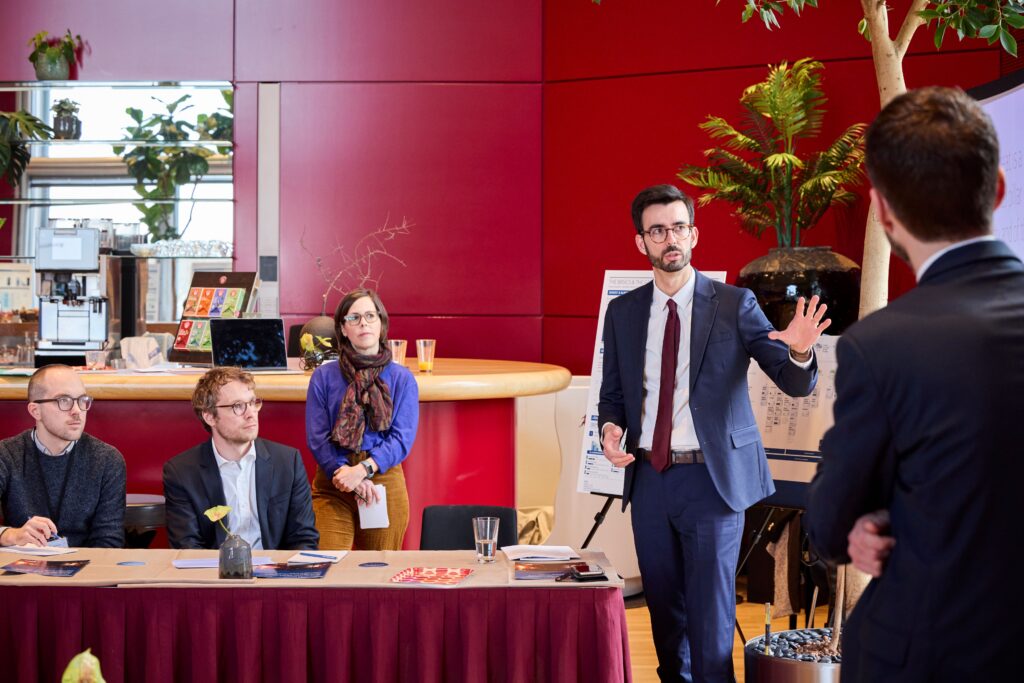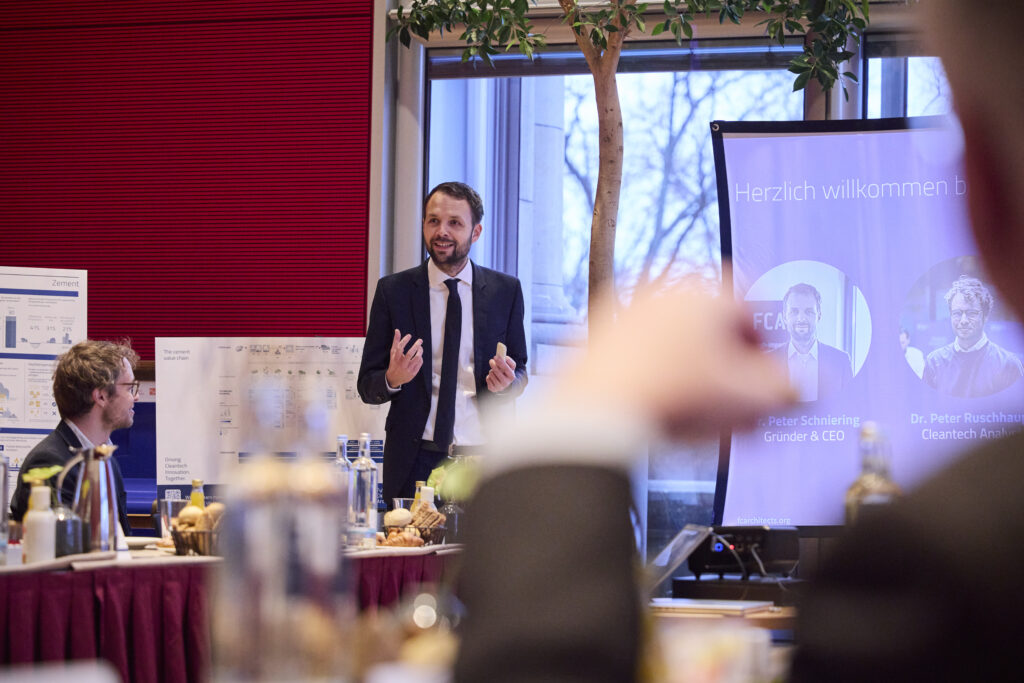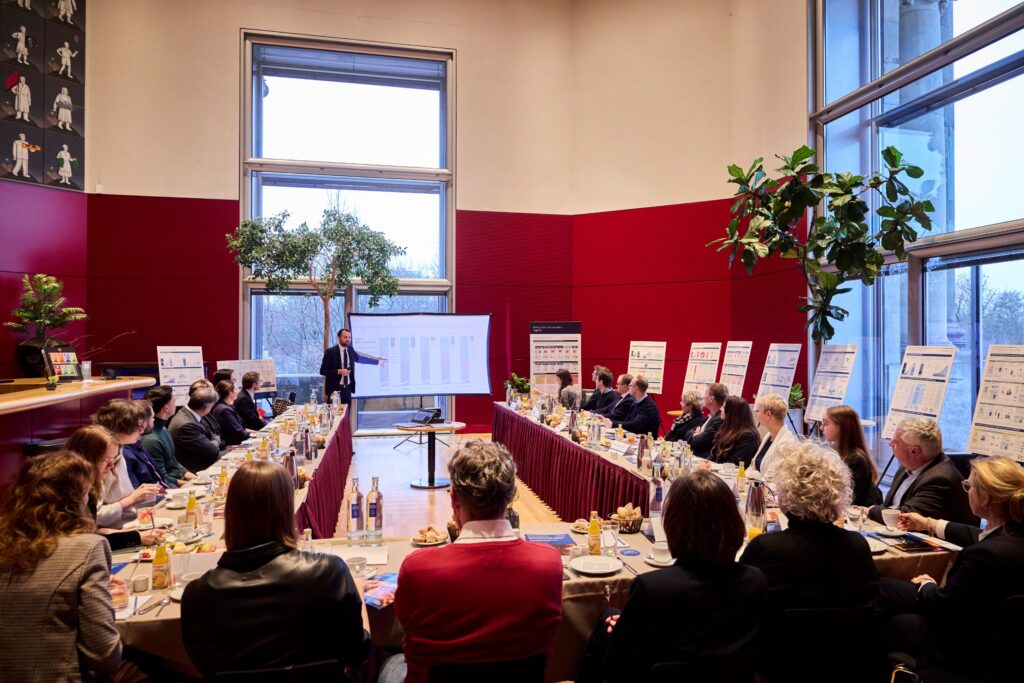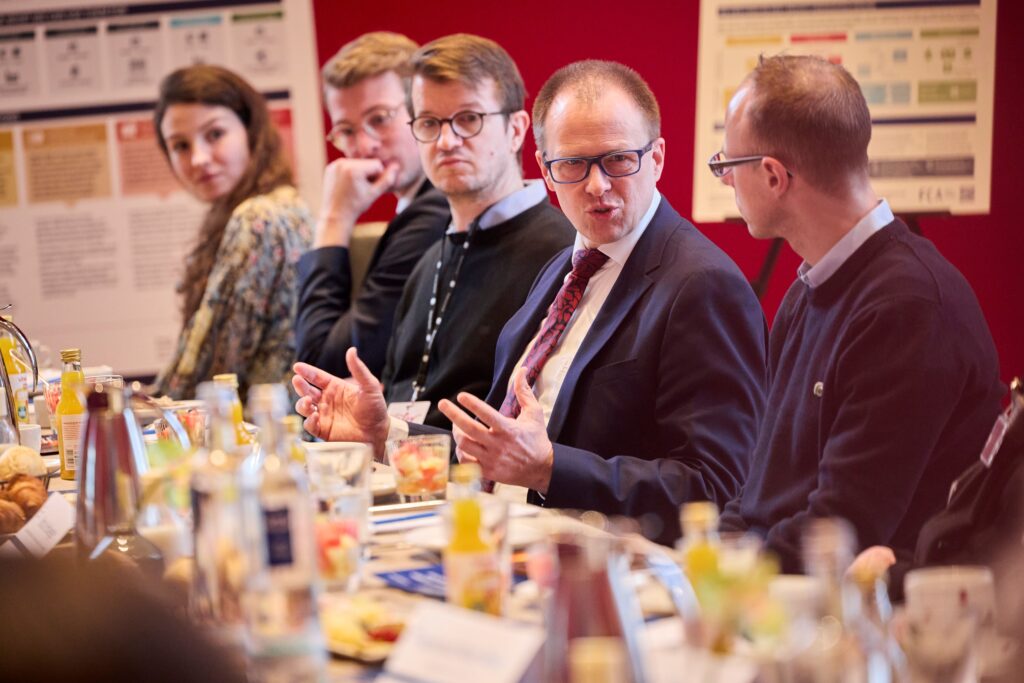Pragmatic recommendations for cleaner and competitive energy-intensive industries in Germany
Germany’s industry is in decline and in particular its energy-intensive segment. This policy challenge, and the question of how companies can become more competitive in a decarbonizing world has been one of the contentious issues in a heated campaign leading up to the 23 February election. At a technical briefing in the German Bundestag in Berlin, experts from Future Cleantech Architects outlined which technologies and pragmatic approaches can help German industry become more competitive again while reducing carbon emissions.
Germany’s twin challenge lies in both replacing the fossil gas used in energy-intensive industries, in particular for processes requiring high temperatures, and helping its industry out of a competitive disadvantage. High energy prices have led to a decline of up to 20% of energy-intensive industries in Germany since 2022. That’s largely due to high prices for natural gas, which is used in heating processes to make or forge steel, produce cement, chemicals, and paper. As a result of the dependency on fossil gas, industry is responsible for a considerable chunk of Germany’s greenhouse gas emissions, at 146 megatonnes of CO2 equivalents in 2022.
Mature solutions: direct electrification and thermal energy storage
Two mature technologies that would bring down emissions include direct electrification and thermal energy storage, recently published research from Future Cleantech Architects shows. Both require lowering electricity prices substantially.
Dr. Peter Schniering, CEO and Founder, Future Cleantech Architects:
“Electrification can be one of the pillars for many processes that need mid- and even high-temperature heat. But for that to be competitive, zero-emissions electricity must become cheaper than gas in the long term. Learning curves of clean electricity have exceeded expectations for decades now., so a steep drop in price is not as unrealistic as it may sound.”
Schniering argues that a combination of mature thermal storage technologies and the steep learning curves of less intermittent clean power sources – such as geothermal – provide a pathway that would address the challenge of intermittency related to mainstream renewables, such as wind and solar:
Dr. Peter Schniering, CEO and Founder:
“Thermal energy storage is a mature technology that is currently commercializing. Moreover, quite a few of the start- and scale-ups in the field are German. Policy should incentivize this technology, for instance by making mature storage with short amortization cycles way more present in public funding advice, or providing tax cuts for first movers with high efficiency levels as prerequisite.”
Hydrogen, biogas and Carbon Capture and Storage (CCS): Technologies that are scarce, costly – or both
The industry needs support now in its challenge to win back a competitive edge. Other technologies that are on the table to decarbonize industry, however, have little potential to become competitive sustainably, Future Cleantech Architects’ research shows. That includes hydrogen as well as a process that would continue using fossil gas, but adding CCS, by which resulting carbon emissions are captured and stored.
Dr. Peter Ruschhaupt, Cleantech Analyst, Future Cleantech Architects:
“Green hydrogen is fundamentally less efficient than direct electrification because it requires clean electricity to produce. That’s what makes it a very scarce and expensive resource. Also, real-world execution of the many ambitious plans that have been announced for green hydrogen is lagging far behind. Only 4% of potential production by 2030 from announced projects have so far reached a final investment decision, according to the International Energy Agency, IEA.
CCS on the other hand always carries an additional cost to an existing process, meaning it cannot be competitive without support. That makes it a poor candidate for a globally scalable technology with global impact. Especially if proper care is taken to avoid the leakage of methane, which is a very potent greenhouse gas.”
When workpiece requirements and temperature levels make direct electrification very challenging and a solution for the mid- rather than the short term, biogas can become another option for policymakers that has to be carefully weighed, say Future Cleantech Architects experts.
Dr. Antoine Koen, Cleantech Analyst, Future Cleantech Architects:
“While biogas has the advantage of being a drop-in solution to replace fossil gas, it is scarce as well. Supply is not sufficient to even replace the natural gas used today, because Europe’s high-temperature industries alone consume more than double the current total supply of European biogas. Much less can biogas supply then also cover future biogas needs that will arise in a net-zero world, such as for sustainable fuels for shipping and aviation. Moreover, methane is a potent greenhouse gas, meaning that any leakage quickly ruins the green credentials of biogas. Using it therefore requires paying close attention to the lifecycle analysis of its emissions in order to ensure it is sufficiently low-carbon.”
Future Cleantech Architects therefore argues for the careful prioritization of biogas for processes which have no alternative decarbonization options.
Very high-temperature heat process: prioritization candidate for biogas
One such process may include steel forging, which needs temperatures of more than 1000 degrees Celsius. Dirostahl, a medium-sized company based in Remscheid, North Rhine-Westphalia, manufactures steel parts for machines and industrial plants and consumed up to 200 gigawatt hours per year; more than a large German city would need to heat all of its public buildings.
Dr. Roman Diederichs, Managing Partner, Dirostahl GmbH:
”At temperatures of 200 or 500 degrees, cost-effective decarbonization options include industrial heat pumps and direct electrification. But options dwindle the hotter the process becomes, and the bigger the steel pieces are. Our largest pieces weigh 45 tonnes. Our best option for the time being is biogas, which would be a drop-in solution that does not require a change in the process.”
Hydrogen would be an option from a technological point of view, but is not cost-competitive.
Peter Schniering:
“Processes like the one at Dirostahl have a very steep road ahead to become competitive with direct electrification. Switching to lower-carbon but higher-price technologies like electrification or hydrogen means the company’s products would not be competitive on international markets. That would result in what is called carbon leakage, meaning that products are produced at lower cost but higher emissions in regions outside of Europe.
With regard to hydrogen, it’s also important to take into account that clean hydrogen is scarce and costly, both in the near- and mid-term. This means that hydrogen needs to be prioritized for those sectors that cannot do without it. That includes fertilizer production and chemicals at present, and production of green steel using green hydrogen to reduce iron in the near and medium-term future.”
Industrial competitiveness is a topic high up on the agenda not only of Germany, but also of the European Union as a whole. The European Commission recently unveiled its Competitiveness Compass and is set to launch its Clean Industrial Deal initiative offering a joint plan for competitiveness and decarbonization, on 26 February.
Future Cleantech Architects policy recommendations for clean and competitive industries – the example of Germany
- Capitalize on the innovation potential of direct electrification as a solution pathway for high-temperature heat processes
- Be pragmatic in driving down the cost of zero-emissions electricity, lowering the high side-costs for customers and supporting alternative clean electricity sources
- Incentivize thermal energy storage for new and existing systems
- Prioritize support measures for hydrogen for sectors in which other technologies are not an option
- Prioritize biogas for sectors in which no other cost-competitive technologies exist to protect industry
- Avoid carbon capture and storage – except where without alternative – and instead promote globally-competitive technologies





Resources:
Decarbonizing High Temperature Heat in Industry (Technical Report)
Hydrogen Guardrails: Guiding Hydrogen Deployment for Industrial and Heavy Transport Decarbonization (launch 19 February)
Spokespeople:
Industrial Policy, Germany and Cleantech in general
Dr. Peter Schniering (German, English)
High-Temperature Heat
Dr. Antoine Koen (English, French)
Dr. Peter Ruschhaupt (German, English)
Hydrogen
Magnolia Tovar (Spanish, English, Dutch)
Dr. Peter Ruschhaupt (German, English)
EU Policy:
Marlène Siméon (French, English, Spanish)
Interview requests:
Juliane Harlfinger, Media Relations, juliane.harlfinger@fcarchitects.org, +49-157 522 14270
Andrea Lindblom, Head of Communications, andrea.lindblom@fcarchitects.org, +46-73-345 05 71
__________________________________________
About Future Cleantech Architects:
Future Cleantech Architects is a climate innovation thinktank based in Germany that exists to close the remaining innovation gaps to reach net-zero emissions by 2050.

